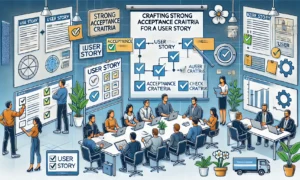In today’s fast-paced digital economy, companies must be agile, customer-focused, and efficient in their product development processes. The Lean Product Model has emerged as a cornerstone methodology for achieving these goals. It emphasizes building products iteratively, learning from customer feedback, and minimizing waste. One of the most iconic examples of the Lean Product Model in action is Dropbox, a file storage and sharing service that grew from a simple idea to a tech giant with over 700 million users globally.
What Is the Lean Product Model?
The Lean Product Model focuses on creating a Minimum Viable Product (MVP), gathering real-world feedback from users, and continuously refining the product. The key principles of the Lean Product Model include:
- Customer-Centric Development: Understanding what customers truly want.
- Rapid Experimentation: Testing assumptions quickly and affordably.
- Iterative Improvements: Using feedback loops to enhance the product.
- Minimizing Waste: Avoiding unnecessary features and processes.
Dropbox: A Lean Product Success Story
When Dropbox was founded in 2007 by Drew Houston and Arash Ferdowsi, the concept of cloud storage was relatively new. While the idea of storing and sharing files online seemed promising, Houston knew that simply building a robust platform wasn’t enough. To succeed, Dropbox needed to ensure its product solved real customer problems.
Here’s how Dropbox leveraged the Lean Product Model to achieve massive growth:
1. The MVP: A Simple Demo Video
Instead of building a full-fledged product, Dropbox began with a low-cost MVP: a three-minute explainer video. The video demonstrated the product’s core functionality—seamless file syncing across devices—and targeted tech-savvy early adopters on platforms like Hacker News and forums.
The result? Thousands of people signed up for the waitlist without touching the product. This validation proved there was significant demand for their service and helped the team refine their vision before investing heavily in development.
2. Iterative Development Based on Feedback
Dropbox’s next step was to create a basic version of their software and release it to a small group of users. These early adopters provided invaluable feedback, which the team used to prioritize features and improve the user experience. For example:
- Simplifying the user interface to make file sharing intuitive.
- Enhancing platform compatibility for Windows, macOS, and mobile devices.
By involving users in the development process, Dropbox ensured its product addressed real-world needs.
3. Scalability Through Referral Programs
Another aspect of Dropbox’s lean approach was its referral program, which incentivized users to invite their friends in exchange for additional storage space. This growth hack proved wildly successful, driving massive organic growth without the need for expensive advertising.
The referral program was itself a lean experiment—launched quickly to test its effectiveness before being scaled globally.
4. Continuous Testing and Improvement
Even after reaching millions of users, Dropbox adhered to the Lean Product Model. The team continuously analyzed user data, conducted A/B tests, and incorporated feedback into updates. They refined features like file sharing, collaboration tools, and integrations with other services to stay ahead in the competitive cloud storage market.
Key Takeaways
Dropbox’s journey demonstrates the power of the Lean Product Model for startups and established companies alike:
- Start Small: Begin with an MVP to validate your idea before committing significant resources.
- Listen to Your Users: Build feedback loops into your development process to stay aligned with customer needs.
- Test and Iterate: Experiment, analyze results, and adapt quickly to changes in the market.
- Focus on Core Value: Avoid feature bloat; prioritize what solves your customers’ problems.
Conclusion
The Lean Product Model isn’t just a methodology—it’s a mindset. Dropbox’s rise to prominence is a testament to the value of starting small, learning fast, and adapting relentlessly. Whether you’re building the next groundbreaking app or refining an existing product, adopting lean principles can position you for sustained success in a competitive landscape.
Embrace the lean approach, and your product just might become the next Dropbox
Disclaimer
Posts in the Notebook are written by individual members and reflect personal insights or opinions. Please verify any information independently. If you have any concerns, notify the admin immediately so we can take action before any legal steps are taken.





